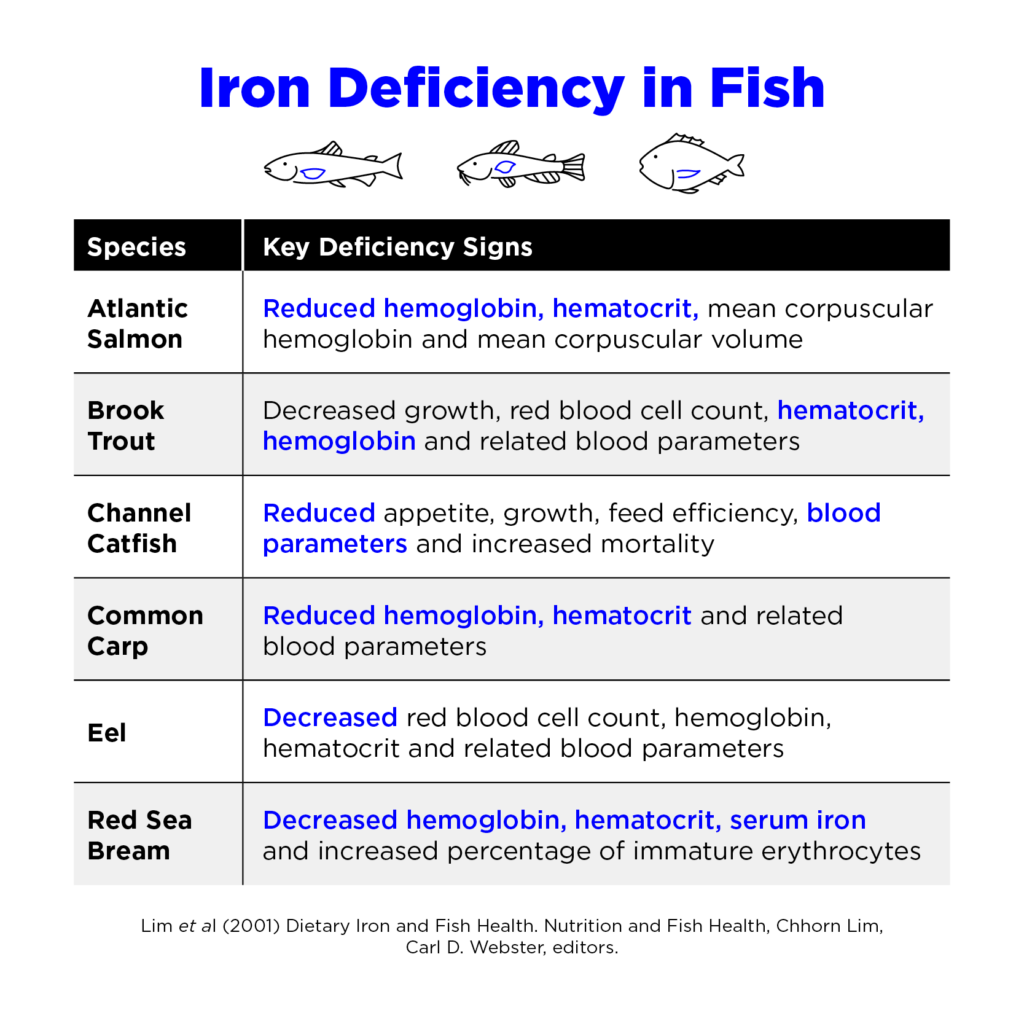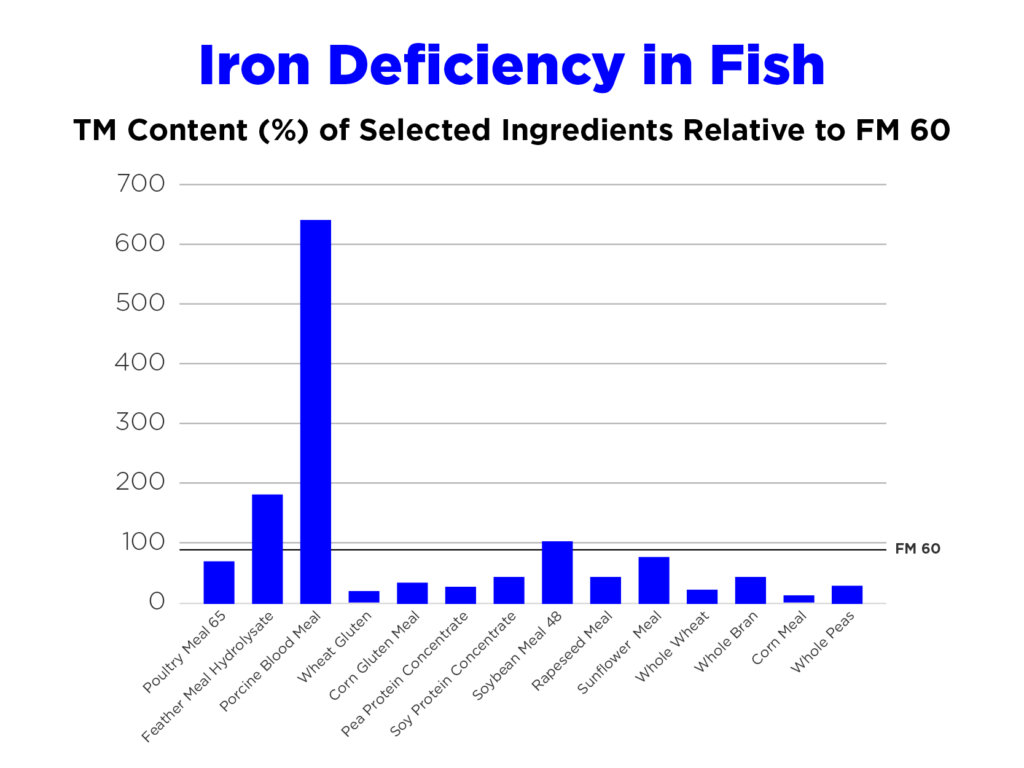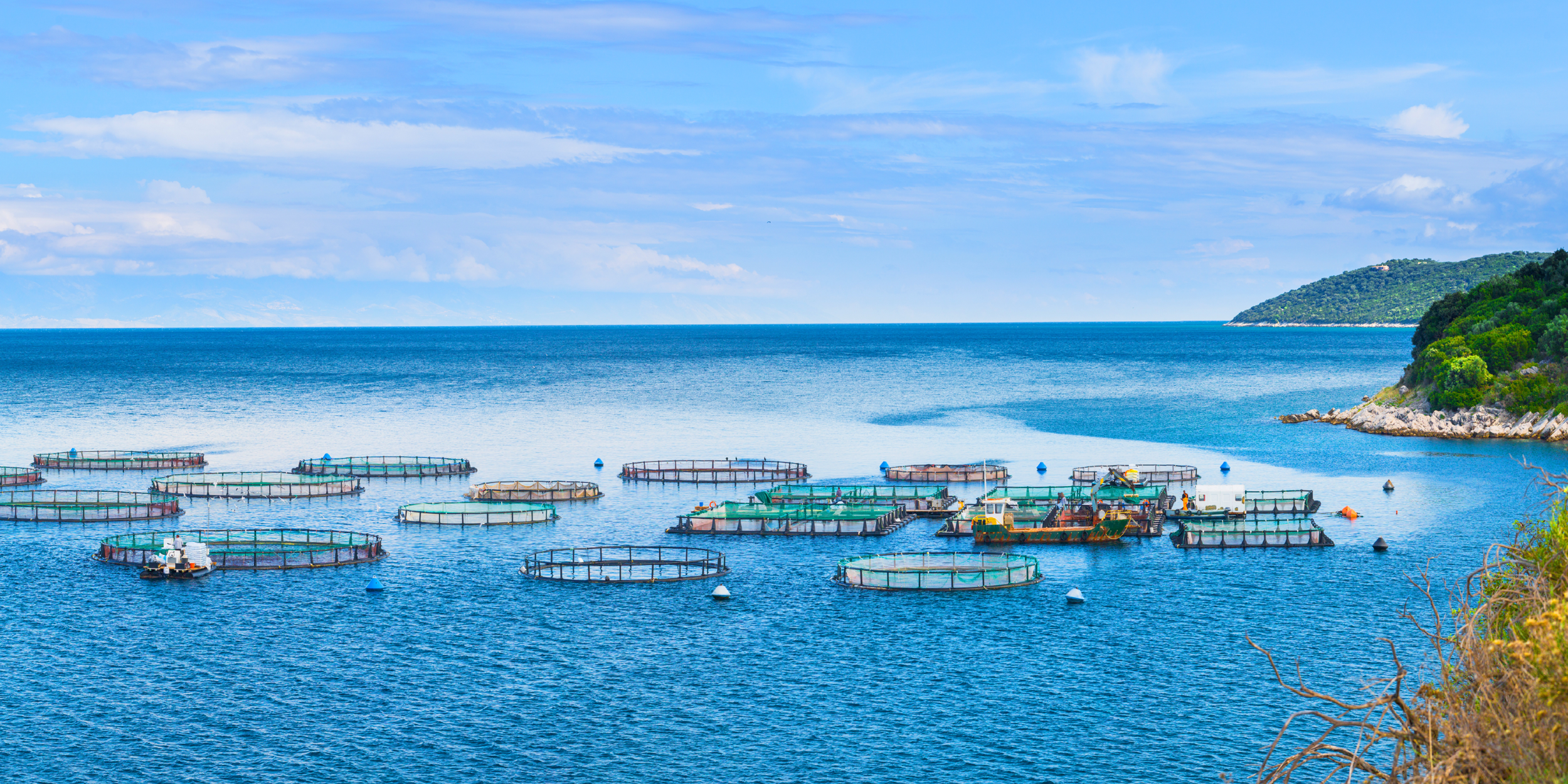O ferro é um mineral essencial para a saúde e a produtividade de todos os animais, muitas vezes esquecido.
Níveis adequados de ferro são essenciais para a síntese da hemoglobina, o componente das células vermelhas do sangue que liga o oxigênio e o transporta para os tecidos. A hemoglobina também fornece oxigênio para apoiar as principais vias metabólicas que impulsionam a produção de energia, o crescimento e a função fisiológica geral, inclusive a resposta ao estresse e a função imunológica, produzindo anticorpos essenciais para o combate a infecções.
A baixa hemoglobina pode levar à anemia, causando redução do apetite, menor eficiência alimentar e desempenho geral ruim do animal. Como o ferro desempenha um papel importante na resposta imunológica, a anemia grave pode levar ao aumento da incidência de doenças, à alta mortalidade e a perdas econômicas onerosas.
O ferro também é essencial para a função da mioglobina, uma proteína que armazena e transporta oxigênio no tecido muscular. A mioglobina dos peixes desempenha um papel crucial no suporte ao metabolismo aeróbico, especialmente nos músculos que requerem muito oxigênio, como os da cauda ou os dos peixes que nadam ativamente.
A anemia em espécies aquáticas está aumentando?
A anemia está se tornando cada vez mais comum em peixes cultivados, geralmente resultante de deficiências nutricionais e/ou infecções e infestações causadas por vários patógenos. Um estudo recente mostrou que até 13% dos salmões de viveiro da Escócia estão sofrendo de anemia anualmente.1 A anemia microcítica em peixes é comumente associada à deficiência de ferro, mas também pode resultar de infecções ou infestações parasitárias que causam perda de sangue, como a hemorragia induzida por parasitas sugadores de sangue.
Sem ferro adequado, os peixes podem se tornar mais vulneráveis a doenças infecciosas, e o risco de surtos de doenças em sistemas de aquicultura aumenta significativamente.
A tendência à aquicultura intensiva - com altas densidades de estocagem e ambientes confinados - agrava esse problema. Essas condições estressantes podem prejudicar a absorção de nutrientes e a função imunológica, tornando as deficiências nutricionais, como a deficiência de ferro, mais impactantes.
Quais são os sinais de deficiência de ferro em peixes?
Os sintomas de deficiência de ferro e anemia em peixes são praticamente os mesmos de outras espécies: baixos níveis de hemoglobina e hematócrito reduzido (porcentagem de glóbulos vermelhos no sangue). Os resultados são exibidos pela redução da atividade de natação, redução do apetite, crescimento lento, maior suscetibilidade a infecções e doenças, além de pele e brânquias pálidas.
Em estudos com bagres de canal, foi observada uma redução notável no apetite, no crescimento e na eficiência alimentar, além do aumento da mortalidade.

Causas de anemia em espécies aquáticas
Há vários fatores que podem levar à anemia em espécies aquáticas:
Deficiência de ferro na dieta
- Substituição de farinha de peixe O uso de ingredientes alternativos com menor teor e biodisponibilidade de ferro requer um balanceamento adequado do ferro para evitar a deficiência nutricional e os impactos negativos associados no desempenho e na saúde dos peixes.
- Anemia não nutricional
- Infecções virais: Os vírus da necrose eritrocítica alteram o metabolismo das células vermelhas do sangue e aumentam a lise celular. O vírus da anemia infecciosa do salmão causa hemorragias em órgãos vitais.
- Infecções bacterianas: Bactérias como Aeromonas hydrophila produzem hemolisinas que danificam as células vermelhas do sangue. Diversos Aeromonas causam anemia hemorrágica em várias espécies de peixes.
- Parasitas externos: Parasitas como Argulus sp., Lepeophtherirus salmonis e Sparicotyle crisopídeos pode causar perda de sangue ao se alimentar da superfície da pele do hospedeiro.
- Parasitas internos tais como Trypanosoma danilewskyi e Trypanoplasma borreli pode digerir a hemoglobina do hospedeiro.
- Fatores ambientais como a má qualidade da água ou a proliferação de algas, causando perda de sangue devido ao sangramento das brânquias. Os altos níveis de nitrito na água interrompem o transporte de oxigênio no sangue.
A deficiência de ferro em espécies aquáticas é influenciada por vários fatores, um dos quais é o uso crescente de ingredientes de origem vegetal nas dietas de aquicultura. Desde o início da década de 1990, o setor tem se voltado para alternativas sustentáveis e econômicas à farinha de peixe, como a soja e outras proteínas vegetais. Embora essa transição apoie as metas ambientais e econômicas, ela também pode contribuir para a redução da biodisponibilidade do ferro. O ferro derivado de plantas geralmente é absorvido com menos eficiência do que o ferro encontrado em fontes de origem animal. Além disso, compostos como fitatos e polifenóis, que são comuns em materiais vegetais, podem inibir ainda mais a absorção do ferro.

Mudanças ambientais agravam o impacto da anemia
As temperaturas da água do oceano estão aumentando. Desde o início dos anos 1900, as temperaturas globais da superfície do mar aumentaram a uma taxa média de 0,14°F (-17,7°C) por década - quase 1,7°F (-16,83°C) no total, sendo 2023 o ano mais quente já registrado.2
Isso significa problemas para o setor de aquicultura.
As temperaturas mais altas dos oceanos afetam as populações aquáticas, aumentando seu metabolismo. Uma taxa de metabolismo mais alta significa que os peixes não só precisam de mais oxigênio para uma função metabólica eficaz, como também suas necessidades alimentares aumentam para sustentar os níveis de energia, manter o crescimento e garantir o desempenho reprodutivo. A exposição prolongada a temperaturas quentes também pode desencadear uma resposta ao estresse, como a liberação de cortisol, que enfraquece o sistema imunológico e deixa os peixes vulneráveis a doenças e à mortalidade.
Com o aquecimento das águas, os parasitas aquáticos comuns também começam a se desenvolver. As infestações de parasitas se tornam mais intensas e de maior duração, criando uma pressão adicional sobre as espécies aquáticas que pode levar a uma maior incidência de doenças e a um desempenho geral inferior, entre outros problemas.
Esses desafios tornam a ocorrência de anemia ainda mais prejudicial.
Prevenção da anemia na aquicultura
A prevenção da anemia é importante para garantir uma produção abundante e eficiente de proteína de alta qualidade para os consumidores de todo o mundo.
Para atingir esse objetivo, é necessário equilibrar as dietas de peixes criados em fazendas com níveis adequados de ferro prontamente disponível. Estudos sugerem que as fontes de ferro, como os quelatos de ferro, podem ser mais eficazes para melhorar a saúde hematológica e o transporte de oxigênio nos peixes.
O ferro Zinpro é mais facilmente absorvido e utilizado pelos animais em comparação com as fontes inorgânicas de ferro. O ferro Zinpro também tem maior estabilidade e menor reatividade no trato digestivo, minimizando a interferência com outros nutrientes. Zinpro® Availa® Fe e Zinpro® ProPath® Fe fornecem a mais alta eficácia biológica de qualquer fonte comercial de ferro no mercado. Isso significa que mais ferro Zinpro é efetivamente absorvido e metabolicamente disponível nos órgãos, tecidos e sistemas enzimáticos do animal. A absorção eficaz ajuda a atenuar a anemia e desempenha um papel na defesa antioxidante, ambas respostas fisiológicas que ajudam o animal a resistir a situações estressantes que são comuns em condições de produção.
Balanceamento de dietas para prevenir a anemia
Por mais de 50 anos, a Zinpro tem apoiado as necessidades nutricionais dos animais. Os produtores que trabalham com todas as espécies otimizaram com sucesso a produção e minimizaram a mortalidade e as perdas associadas com a ajuda dos especialistas da Zinpro.
Saber por que o ferro é crucial é o primeiro passo para melhorar a nutrição de ferro dos animais aquáticos. O próximo passo é observar como os principais produtores já estão aplicando esse conhecimento. Em um próximo blog, compartilharemos a experiência dos produtores em primeira mão e os resultados positivos da produção e os benefícios econômicos da formulação de dietas com fontes avançadas de ferro, como Zinpro® Performance Minerals®.
PERGUNTAS FREQUENTES
Nem todos os produtos estão disponíveis em todos os mercados.Entre em contato com seu representante Zinpro para obter mais informações.
1Anemia na aquicultura de salmão: A Escócia como um estudo de caso. https://europepmc.org/article/MED/35039692
2Indicadores de mudanças climáticas: Temperatura da superfície do mar
https://www.epa.gov/climate-indicators/climate-change-indicators-sea-surface-temperature

